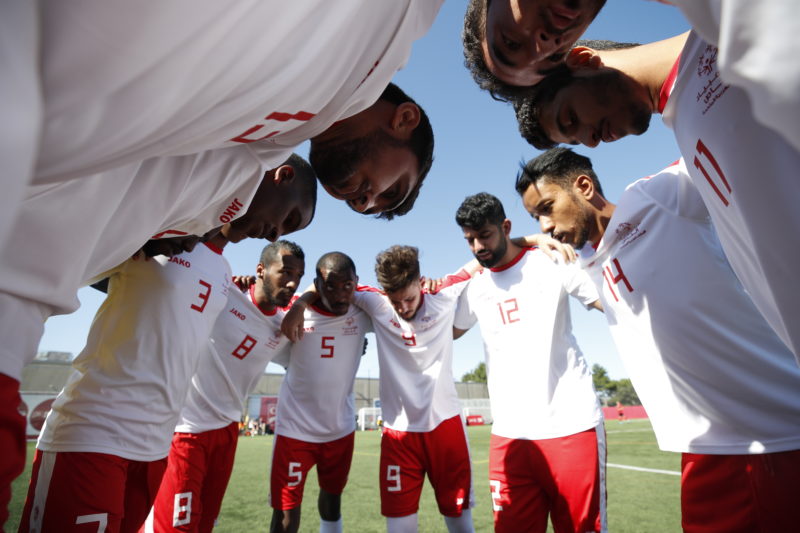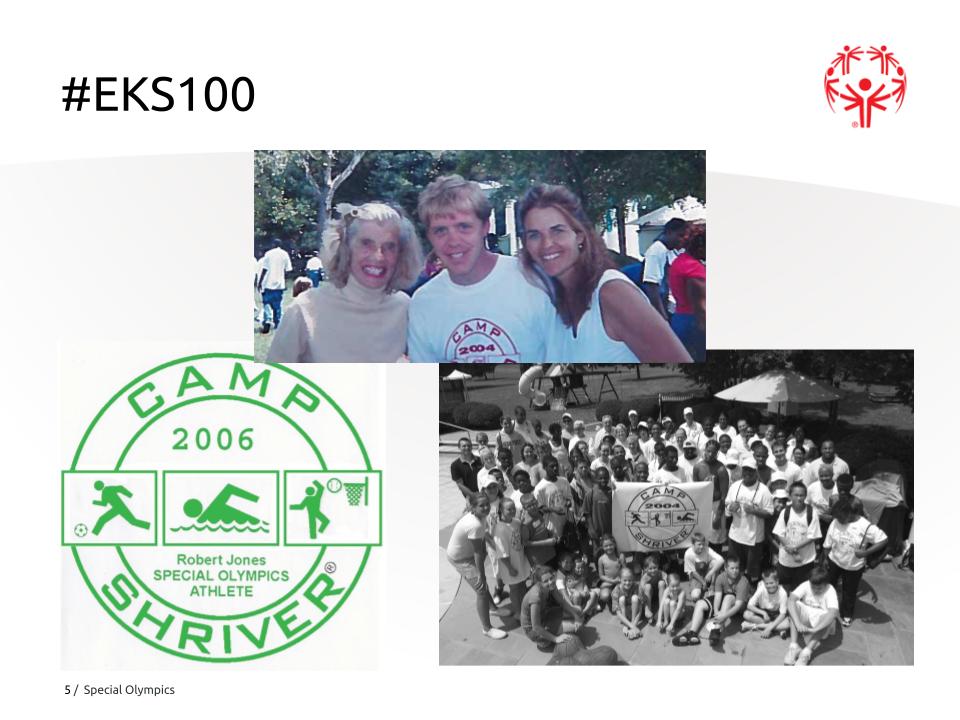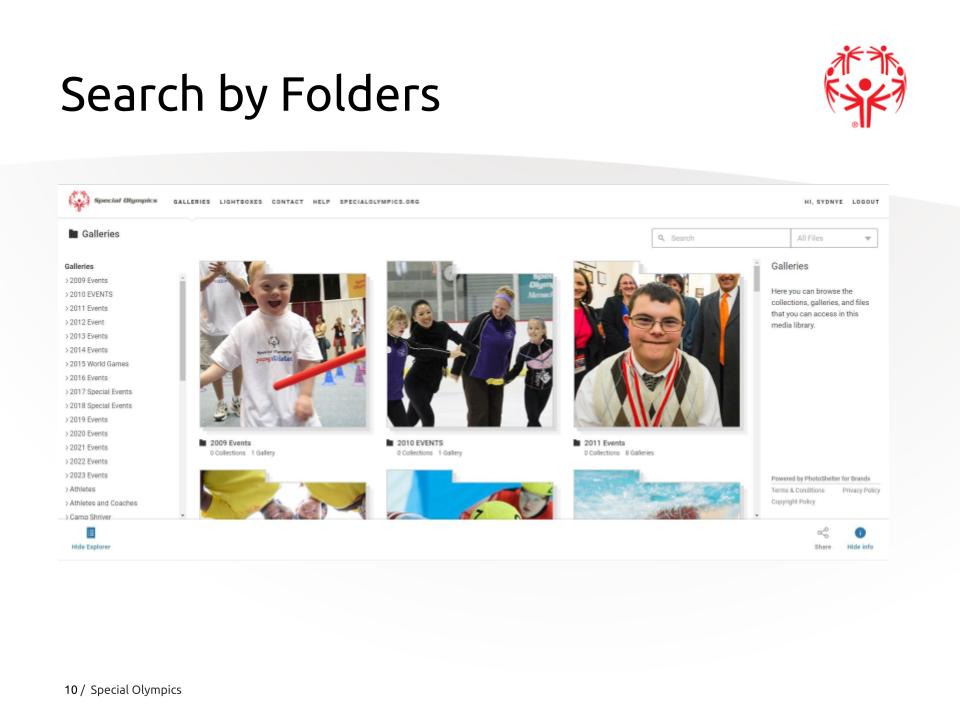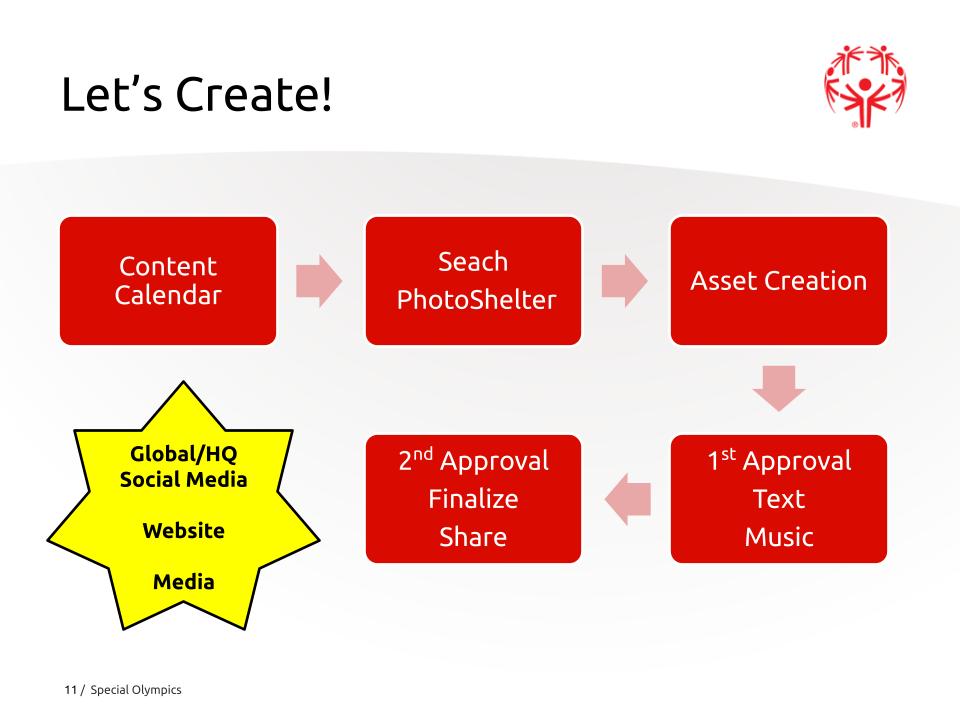As inclusivity and accessibility become increasingly important topics of discussion in the world and at work, employers need to tap in and listen to the neurodiverse, intellectually challenged and physically disabled communities in order to implement helpful tools to support truly diverse talent pools.
To gain further insight into how creative team leaders might amplify talent and develop accessible resources for employees with intellectual disabilities and physical challenges, we sat down with Sydnye White, Senior Director of Storytelling at Special Olympics and Brand Communications Coordinator Robert Jones during our latest Inside Look webinar to learn their approach.
Watch the full session below and read the transcribed Q&A after the playback.
Q&A with Special Olympics’ Sydnye White and Robert Jones
When did you two start working together? The last time we spoke at The [Collaboration] Summit, you mentioned you had started at Special Olympics a year ago?
Sydnye: Three years ago, actually. We’ve always been on the same team, so when I started, he was already on the communications team and I joined him, but in the last year he’s been directly on my team…on the content team with me.
Tell us about one of the first projects you remember working on together.
Sydnye: We’ve worked on so much, but one of the things — Bobby, I think it was when I was new and we were working on the 50th anniversary?
Robert: Oh yeah, I did two coloring books — one for the 50th anniversary and that was unveiled in Chicago.
Sydnye: Robert is our resident artist and he does great pictures. If you give him a theme and tell him what you want, he will draw it for you. I don’t know if you can see his pin, but he designed a pin for the 2019 World Games in Abu Dhabi and it was really popular. It remains one of our most popular pins…We gave Jeremy the link where we’ve started to collect some of Bobby’s artwork if you want to see. Bobby, what was the inspiration for that particular pin?
Robert: I think it was that they wanted something to give to athletes. Also, the other one was the WWE; I did a pin for them. I did a wrestling belt that was also a pin and they were really rare because all of the pins went really quickly—they were gone within like five minutes because all the athletes loved them. They were kind of like a collector’s item.
I know that you hosted an art show at the headquarters. Can you tell me a little more about that?
Robert: Yeah that was a couple of years ago. My boss at the time, her name was Megan and she set up an art show, so they had all my artwork set up in one of the break rooms that we have. I had flags and all kinds of different pictures; people just really loved it. I think it was really good and it was cool for everybody to see because I think people know I kind of do art for our department, but it’s always nice for other people to see it because I feel like if it’s out there it gives me inspiration to do even more.
Does anyone read or write braille or has technology replaced that with audio recordings or closed captioning? Can you talk to me a little bit about accessibility and how you create those inclusive guides for all team members?
Sydnye: Yes, we have on our communications team an athlete named Ben Collins; shoutout Ben for winning a couple of medals this weekend at the Maryland State Games for powerlifting. He has sight impairment so he uses the JAWS system that helps him hear his work, when emails come in and what not. He can also make his text on screen a lot bigger and he’s got a braille machine so he puts those underneath all of our name tags—they’re also in braille. He makes two—one, so we can bring one home and learn our own names in braille and one he puts up as well. Then, our website team has really done a lot of great work — shoutout to Brian Gresham for the accessibility features on our website that include different color texts for different types of sight impairments, making sure things are in plain text so they’re easy to read and comprehend and audio features as well so that if you can’t read at all, you can get descriptions.
Accessibility needs to be number one and it should just be what any web experience offers, you never know how its improving other’s lives; just by speaking to and including them. That’s an incredible and important learning.
Sydnye: It benefits us as well because if our colleagues and athletes around the world can react and give us their feedback and tell us what they’d like to see, what’s working and what’s not working, then it makes our work better, it makes it more accessible and more interesting. It makes our work easier because we don’t have to then try to go and figure things out—we go to the source of the people we’re trying to represent. In Bobby’s case, in Ben’s case, in a lot of people’s cases that we work with, it’s empowering athletes to tell their own stories.
And, that’s the whole point of what we’re talking about here today—is having agency over the way your story is shared. Robert, I know that you’ve been with the communications and content team at Special Olympics for over 20 years — competing and also on the [corporate] team, so what’s your favorite part of your role and being a part of the community?
Robert: I have to say a lot of the artwork that I do; that’s a big part of it. I didn’t mention this before, but I’ve done artwork for different celebrities too. I did artwork for Maureen McCormick aka Marsha Brady. I’ve done artwork for a couple of WWE wrestlers. I just recently did one for this one wrestler whose name is Drew McIntyre. He’s a Special Olympics ambassador and I did a wrestling belt for him. I think there are photos of him receiving it in PhotoShelter; Sydnye, do you know?
Sydnye: Yes, I think we do and you can see him tearing up when he received it!
Robert: Also, I was going to say working with different people at Special Olympics. I work with Sydnye quite a bit…I’ve done pictures for Tim Shriver and all sorts of people and they just seem to love it. So I’d say the biggest part of my job is to make pictures and at the same time, spread joy.
Sydnye: Larissa, you had mentioned the International Global Messengers because we talked about that in our prep meeting. We have Sargent Shriver International Global Messengers which is a program named after the husband of Eunice Kennedy Shriver [founder of Special Olympics.] We have one from each region for a total of four years and they work as spokespeople on behalf of the organization and the movement. They all came to D.C. in 2018/2019 and we had some media training with them since they’d be speaking on our behalf and Bobby we tapped you to do something.
Robert: Yeah, we were doing media training with them and I was doing interviews with athletes, asking certain questions to try to get them prepared because for the Sargent Shriver Global Messengers, they’re in front of media so they want to be prepared to answer if they’re asked something about Special Olympics…Sydnye was there and she thought I asked questions really well, so ever since then I’ve kind of moved up in a way.
Sydnye: Yeah, he’s really become a producer! He had one really big video for National Disability Employment Awareness Month a couple of years ago where he interviewed our CEO, Mary Davis. That’s up on the website and it serves as an example of what other organizations could do with different types of staff…Then, as I said before, to celebrate Eunice Kennedy Shriver, what would have been her 100th birthday year, Bobby designed and conceptualized these one-to-two minute videos where he asked people questions that he wrote down and developed, so that he would get the best answers. We cut the questions out so it just looks like that person is talking to the camera, but it’s just a skill that we saw that Bobby had, something that we could develop and work with him and he’s just really used that opportunity to grow himself and move forward in what he’s doing. I just also want to say that Bobby pretty much taught himself how to do the video montages with the pictures.
Robert: I taught myself how to do the montages and I kind of taught myself how to use PhotoShelter as well, but more the montages because I just took a day or two to play around with it and by the time I got done I did a whole era of Special Olympics in one video—from ‘97 up until now. I showed it to Sydnye and she was impressed with what I could do with it and to learn that quickly—I always felt like I was a pretty fast learner, but to learn that quickly, I felt like I was in pretty good shape.
That’s so impressive! Do you have any tips for people who are just getting started with video editing and producing?
Robert: I would say just take a day or two out if you want to try a montage to just take some dummy pictures and play around with it…You know, you can put them in different orders to tell a story or you can put music behind it or you can customize it with the type of music you want to put in there, you can do it for different events—I mean, you can do them for all different kinds of things. Just keep on plugging away! It’ll get to you eventually; it took me a while and of course, with Sydnye, I had to learn pretty quickly because things were flying at me pretty fast.
What is the first step when you’re thinking about accessibility as an employer or a team leader to expand best practices and guides for people of all abilities to be included in the storytelling process?
Sydney: I think the first step is to create a team that you can work with who can review the work that will be using the accessibility features to actually make sure that they’re working and speaking to the folks who need them to understand them. You can’t figure everything out on your own and that’s fine, so really work on creating that team that can support you in those ways. Then, the second thing I would say is carve a little bit of time to talk to the team to make sure everyone is on board, to make sure everyone is listening; give everyone enough time to listen and ask questions and to listen again…We’re a fast moving team, but we do like to leave time to prepare and ask questions so that the job gets done well and once we take that time, we’re going to move quickly on to the next thing.
You mentioned before that in a normal year — in the Beforetimes, you [Special Olympics] normally hosted 114,000 competitions a year, meaning 315 competitions a day across the globe. That’s amazing. How do you in headquarters focus on key landmark events that bring together multiple regions and countries?
Sydnye: Generally, our hallmark events which are our Special Olympics World Games that happen in the summer, those are every four years and our Winter World Games which are every four years. Then, we have some other international events like the Unified Cup which is a soccer — also known as futbol, invitational. We had our first dance sports this year…and we’ve had international tennis invitationals…So, for the regional ones, we really work with the regional offices to really get the stories and assets…For instance, if East Asia and Asia Pacific work together for an All Asia game, then we’ll work with them and they’ll give us what they think are the highlights and the best stories.
Sydnye: I do want to say one last thing, because Bobby mentioned moving fast—again, we do want to take the time to prepare everyone, but we’ve found that everyone is better prepared if you go over the agenda. If everybody can understand the agenda, then everyone can contribute ideas and feedback in a meaningful way during the meeting. We try to remove that bar of low expectations—you know, some folks would say, ‘Athletes with intellectual disabilities—why is Sydnye pushing them to move fast,’ and I’m not pushing anyone any faster than what they can do, but I have expectations that you’re going to work to your best ability, at your best rate. You know, I’ve seen and been told what Bobby can do, so when it was time to learn a new platform there was no reason for me to say, ‘Take all the time in the world that you need,’ because no, he’s here, he’s doing a job, he’s being paid to do a job and we have deadlines. Bobby can figure things out and Bobby can ask questions just like everyone else can, so I just want to bring up, wherever we go and whatever arena we are in, the crippling effects of low expectations and when that is flipped on its head to high expectations, not only can that individual fly and soar and shine, but we all can. The amount of pictures and videos and feedback that Bobby has created is invaluable, so why would I give Bobby another year to get that great stuff to me, when I can be sharing that out with the world?
Watch the full webinar to see how the uniquely talented Special Olympics content team uses PhotoShelter to collaborate and tell diverse, impactful visual stories.








